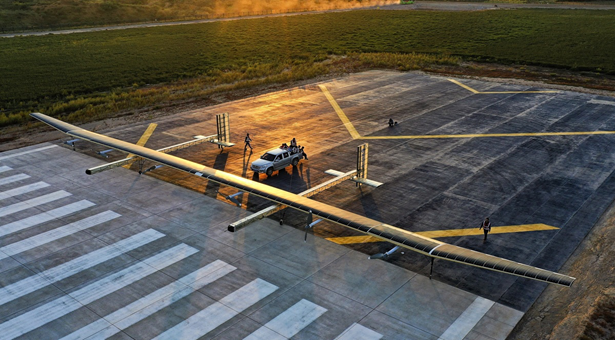China’s fully solar-powered, semi-satellite drone
Context
China’s first fully solar-powered unmanned aerial vehicle has successfully completed its maiden test flight with all on-board systems functioning optimally.
- It had a smooth flight for 26 minutes and landed safely.

About the new machine
- With a wingspan of 164-ft, the drone is a large machine powered entirely by solar panels.
- The high-altitude, long-endurance (HALE) UAV can stay airborne for long durations.
- It Named the Qimingxing-50, or Morning Star-50.
- This drone flies above 20-km altitude where there is stable airflow with no clouds.
- This helps these drones to make the maximum use of solar equipment to stay functional for extended durations.
- It can operate without a break for months, even years.
Cross between drone and satellite
- The fact that the drone can operate in near-space – 20 km to 100 km above the Earth’s surface – makes it capable of carrying out satellite-like functions.
- If satellite services are not available for, say, time-sensitive operations or in case of wartime disruption, then near-space UAVs can step in to fill the operational gap.
- These drones are also referred to as ‘High Altitude Platform Stations’ or pseudo-satellites.
- China already has this capacity, but the Qimingxing-50’s long-endurance provides an added advantage to make this capability available over a longer period.
- In July this year, the US Army helped test a solar-powered, near-space Airbus Zephyr S drone that set a new record by being airborne for 42 days.
- Both these drones can undertake surveillance missions that require them to stay operational, watching over borders or oceans, for months.
Advantages
- Drones like the Morning Star-50 are cost-effective to build and are also easy to launch and operate.
- Being entirely powered by clean energy from the Sun, the present one can help boost China’s capabilities to operate in near-space and over the ocean.
- This HALE UAV is capable of conducting high-altitude reconnaissance, apart from monitoring forest fires, providing communication and environment relay.

